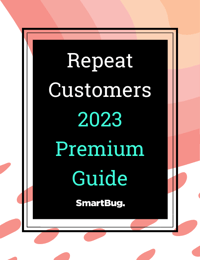
Gaining the trust of new or prospective customers depends on specific content marketing strategies that fit your company and customer demographics. With most strategies, some type of incentive that intrigues and converts customers is necessary, but not all incentives work as well from company to company.
Companies frequently use discounts to encourage customers to convert, yet for many brands, this shouldn’t be the first option. Depending on the company, discounts can:
- Cheapen the value of the brand in customers’ eyes, negatively impacting long-term customer retention.
- Train customers to wait for discounts.
That being said, discounts aren’t inherently bad; rather, you need to be strategic about where you choose to use them. Most brands should avoid discounting except during a first purchase or for big holidays or events such as Black Friday.
Through strategic content marketing, what other incentives can brands provide for new and prospective customers? Read on to find out!
How Discounts Can Hurt Brands
As a customer, you probably love discounts and wouldn’t mind seeing a discount on every product you’re interested in. But as a member of an e-commerce business, discounts aren’t all good—but they’re not all bad either. Just think of discounts like desserts: good in moderation.
When overused, discounts can:
Reduce profitability.
Smaller profit margins are the biggest indicator that discounting is too significant. With insights from your analytics dashboard, you can find out how your discounting strategy is performing. It might help increase overall sales in order to maximize revenue, but it could also hinder the profit margin of each sale.
Condition the customer.
If you offer discount codes too frequently, your customers might recognize a discounting pattern and wait to buy from you until a new discount arrives.
On top of this, you could lose credibility, and your customers will lose the sense of urgency that’s rooted in your limited-time offers, which, as they have learned, aren't really limited-time offers.
Damage brand identity.
The price of high-quality items often has a direct impact on the product’s perceived value, which means discounts can lower the perceived quality of your product.
Plateau demand.
Price elasticity is a microeconomic principle that states that when the price of a product goes down, the demand goes up. So, discounting can lead to higher sales. However, once the discount becomes too large or lasts for too long, it is possible that the demand plateaus, leaving you with reduced-price products that aren’t moving.
Content Marketing Strategies That Avoid Discounting
Discounts might seem like the easiest route toward customer acquisition and retention, but they’re not necessarily the most effective, as we went over in the previous section.
Here are promotion ideas and content marketing strategies to deliver effective marketing campaigns results that don’t involve a percentage discount, price off, and other pricing strategy concepts:
1. Use personalized messaging.
Plenty of marketers make the mistake of delivering boilerplate content that doesn’t address segmented audiences, which is why companies that take the time to personalize their content see the results.
You should gear your promotional messaging toward the stage of the customer journey the individual is in. By promoting the content or items that are most likely to appeal to them, you can go a long way toward boosting sales and retaining customers.
2. Offer gifts.
Whether it’s for a first-time purchase, the anniversary of a customer’s first purchase with your company, or any other significant event, adding a gift to a purchase is a great incentive that delights and helps to convert. It’s also a great way to use excess item inventory.
3. Start a loyalty points program.
Points programs are major sales levers. With every purchase, a customer gains more points that can go toward a future discounted or free item while driving customer loyalty.
To ensure they are aware of the points they have earned, set up an automatic email series that reminds them of the number of points and the items available for purchase or redemption with these points.
4. Offer free shipping.
Although free shipping on every purchase can be too expensive for most small brands, it’s still worth it in certain situations, including instances of high cart value or cart abandonment.
Once the customer begins adding items to their cart, you can use a pop-up to notify them of how much more they should spend before they hit the amount required to get free shipping.
5. Promote new products.
For retained and new customers alike, promoting early access to the latest products can stimulate increased demand. This is an area that thrives on personalization; just like messaging, no one wants to have products they’re uninterested in promoted to them.
6. Bundle.
Bundling pairs products together for a slightly lower price. Usually, the products pair well together and might be promoted with catchy titles. Although this is technically a discount strategy, it’s an effective strategy that doesn’t harm brand equity.
7. Incentivize exchanges.
Occasionally, a product won’t be the right purchase. In these situations, you should encourage exchanging the item for another instead of facing the net loss of a returned item.
Strategies That Don’t Involve Heavy Discounting
A bit earlier on, I mentioned that discounting isn’t a bad strategy; it just needs to be used well. Let’s take a look at a few smart discounting strategies:
Offer discounts only for first purchases.
For first-time customers, a discount can offer a number of benefits:
- The customer immediately receives value on top of the solution (the product) to their problem. It’s not just a monetary benefit but a positive association they now make with your brand.
- You don’t just have a new customer but also someone who’s now on your list of email subscribers. From here, you can market to them in order to nurture and eventually retain them as customers.
Offer discounts only during big sales events.
Black Friday, Cyber Monday, the holidays, the new year, and summer holiday sales are the only times of the year that should guarantee sales. They’re the largest shopping events, and without the incentive of a discount, customers will turn to competitors that do.
That being said, this doesn’t mean discounts shouldn’t come around outside of these events. In fact, some brands might better align with lesser-known holidays. And who doesn’t like a surprise sale from a brand showing some customer appreciation from time to time?
Target discounts.
Offer discounts based on actions rather than blanket, site-wide discounts. For example, a customer might have filled their cart but abruptly left. Or maybe someone has visited a product 3+ times, but not purchased it yet. With a well-timed email or popup promotion, you might offer a discount or free shipping if they complete their purchase.
Conduct A/B testing.
A/B testing is a user experience experiment that marketers deploy to understand how variations of a campaign perform with split audiences.
When it comes to discounting, you might test discounting two different amounts—for example, a $50 coupon versus a $25 coupon for first purchases. If both are converting similarly, go with the smaller discount.
Learn About More Strategies with SmartBug’s E-Comm Marketers
As you’ve read, incentivizing the customer depends on the situation. Discounting—as simple as it might seem—requires planning, strategizing, and good timing. That’s why it’s best to work with a team of strategists and creatives who can incentivize through multiple channels and content marketing strategies to help convert buyers and boost your revenue.
Want to learn more about creating customer satisfaction? Check out the 2023 guide, Repeat Customers: How to Get E-Commerce Customers to Swipe Right on Your Business!

About the author
Ryan O’Connor was formerly SmartBug’s Director of E-commerce Growth, product manager, and sales director. He enjoys helping readers learn how to solve big business challenges through consumer psychology within the constantly evolving e-commerce landscape. Over the past 10 years, Ryan has helped 1000s of DTC brands navigate challenges to grow fast through intelligent marketing. He’s not afraid to get his hands dirty, having launched his own e-commerce stores from the ground up. Read more articles by Ryan O’Connor.





















